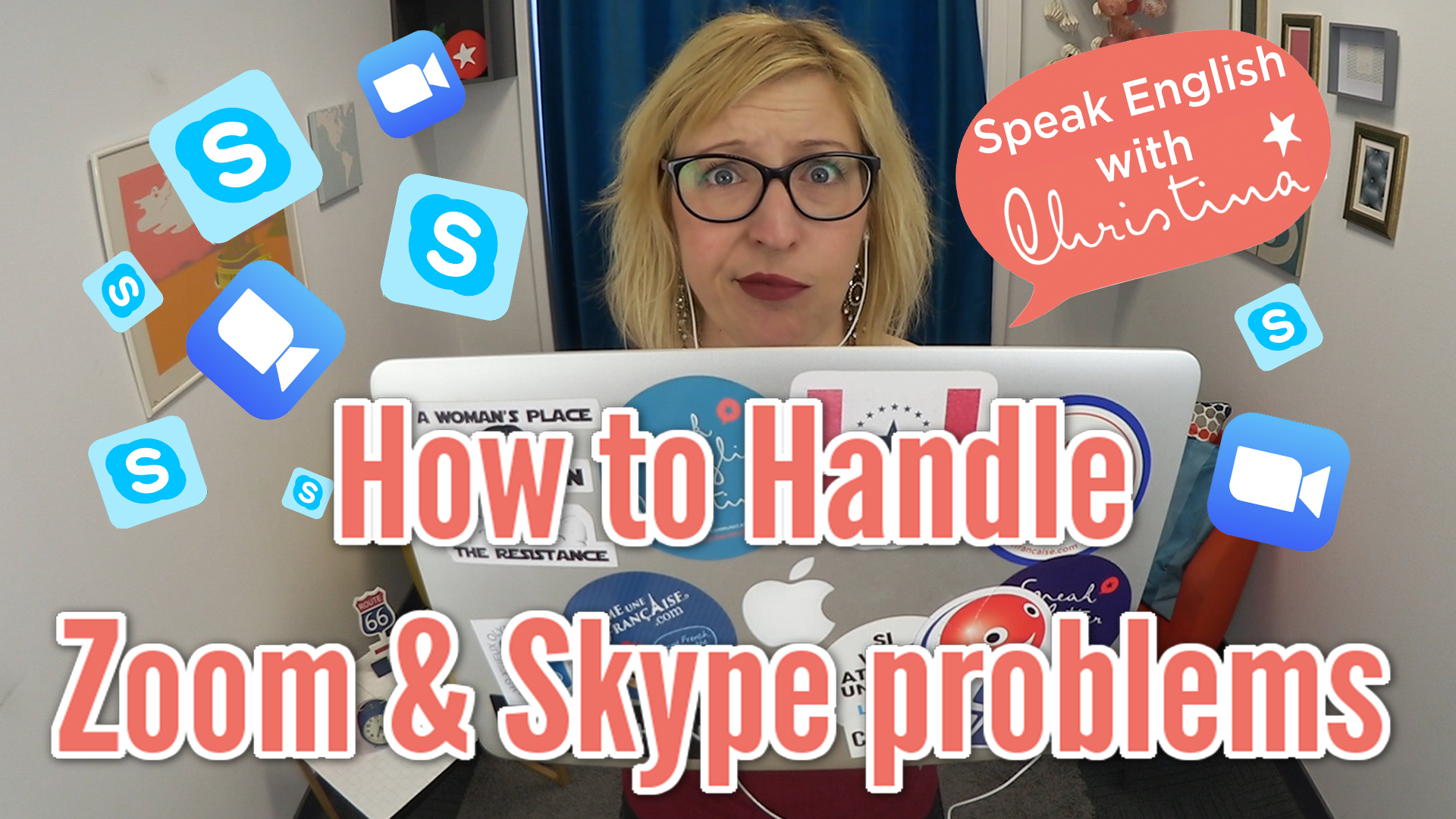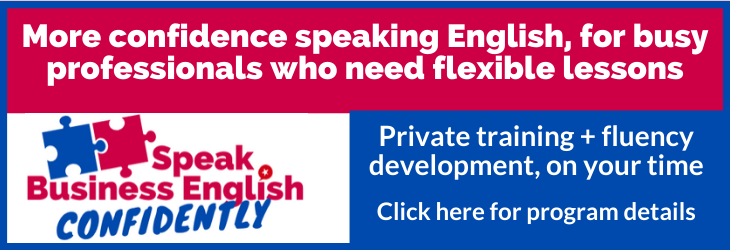
Hi there! I’m your English coach Christina, welcome to Speak English with Christina, where you’ll learn American culture and business know-how to become confident in English.
So you have a Skype interview with an American business…
You have the usual stress of a “real” meeting, but with even more questions: What if you also have to deal with technical problems? What if the connection fails?
Don’t worry. Here’s how you can use that situation to your advantage. Let’s go!
How to ruin a Skype interview
“Can you hear me?” “What about now?” “Is that ok now?” “OK, I can see you, but I can’t hear you.” “Can you hear me now?”
If you’ve used Skype, you’ve experienced a conversation like that. And if you have American colleagues or clients, then Skype is part of the job! There’s even a verb for it in English: “to skype someone.”
American companies often use Skype interviews in the hiring process. The interviewer wants to see your smile and your energy, and how reliable you are.
That’s why technical problems can be devastating.
Because you might make one of these two common, devastating mistakes.
The first one is:
• Pretending everything is ok
That will not help you. The interviewer might think that’s how you handle tough situations: by ignoring the problems instead of dealing with them.
Technical problems are real problems! If you can’t hear well, the conversation won’t be productive! You won’t understand the questions and you’ll give irrelevant answers.
The second devastating mistake is:
• Panicking
It shows you’re easily stressed by something as common as using Skype. You’ll appear uncomfortable with technology.
You’ll look like you can’t control your emotions and stay calm when things don’t go as planned.
In both cases, it sends a very bad signal. Nobody wants to hire a candidate like that!
So how should you react instead?
Start by being prepared
You should be just as serious in your preparation for a Skype or phone interview as you would for a physical interview. In fact, maybe you should prepare MORE.
Skype is notorious for connection problems. Probably 1 out of 3 calls I do on Skype have connection problems at some point.
To minimize the risks:
- Check Skype’s recommendations for connection bandwidth on this page : https://support.skype.com/en/faq/FA1417/how-much-bandwidth-does-skype-need
- Then use this site to test your connection : https://www.bandwidthplace.com/
- If your bandwidth is not enough, use an Ethernet cable to connect, instead of wifi. Yes, it’s old school, but it works!
You should also get familiar with the extra features of Skype. Be sure you know how to turn on your video, in case this isn’t automatic.
And how to send a chat message so you can give email addresses, phone numbers and links to the interviewer.
And learn how to share your screen, it might prove useful!
Problems happen: how should you react?
As I said, connection problems aren’t unusual on Skype. At some point, problems will happen.
So here’s my step-by-step guide to handling connection problems, based on my experience of teaching online and talking to business clients.
Step 1. Be prepared: on the day of the interview, check your connection strength, and keep an Ethernet cable around.
Step 2. If the connection lags or breaks down, you can say:
“Hold on a minute please, I’m just going to plug in my ethernet cable to fix the connection.”
Step 3. If that doesn’t work, suggest cutting the video. Not ideal, but it’s more important to hear clearly than to see the other person.
Say “Do you mind if I cut the video? I’m going to see if that improves the connection.”
Step 4. If that still doesn’t solve the problem, suggest starting the call again. Say “Why don’t we start over? Can you hang up and call me back?”
Step 5. Another option: Keep Skype on for the video, so you can see each other, but use the phone for clear audio.
You can say: “Can I suggest a solution? Why don’t you call me on the phone, but we can keep the video on Skype. Here’s my number.” Then enter your number into the chat on Skype.
Step 6. If all else fails, suggest just using the telephone: “I think Skype is having a bad day. It would be more efficient to do this on the phone, perhaps. Would you like to call me on the phone instead?”
In this whole situation, don’t panic!
Use the opportunity to show that you can control your stress, handle an unplanned situation, and manage the problems of everyday business.
For example, one time, I had a video interview with a big business client, who wanted to discuss English coaching for their sales manager.
We had terrible Skype connection problems, and it took us 10 (very long) minutes to find a solution.
But in the end, the company signed up 3 students for coaching programs (instead of 1, as they originally planned). The HR manager said “You were so calm during the connection problems, I felt you must be really good at teaching online!”
If I had panicked, maybe they would have said “Thanks for your offer, but we’re going to continue looking.”
So remember:
- Prepare your call: learn Skype extra features, check your connection
- Don’t ignore the problem, don’t panic
- You can always fall back on my step-by-step guide to handling technical problems
Write down your plan and the sentences you can use in that situation, and keep them around during your call.
That’s an advantage of Skype – you can “cheat” and be prepared with notes 🙂 So you know everything will be fine even if problems arise!
And now you’re done!
Now, tell me…
How did you handle your last Skype connection problems?
Write your experience down in the comments! It’s a great way to practice, and share with the world!
If you’re a busy professional who needs to level up your fluency, but you find it difficult to do alone, let me help you, with Master Real American English.
It’s a 6-month coaching program in which my team and I empower you to express yourself fluently and naturally, so that people focus on your professional skills & expertise, not on your level of English.
For more information, click the link here, where you can apply to join this program today.
Thank you for learning with Speak English with Christina, and I’ll see you next time!
More good stuff...
Click the image to learn more








